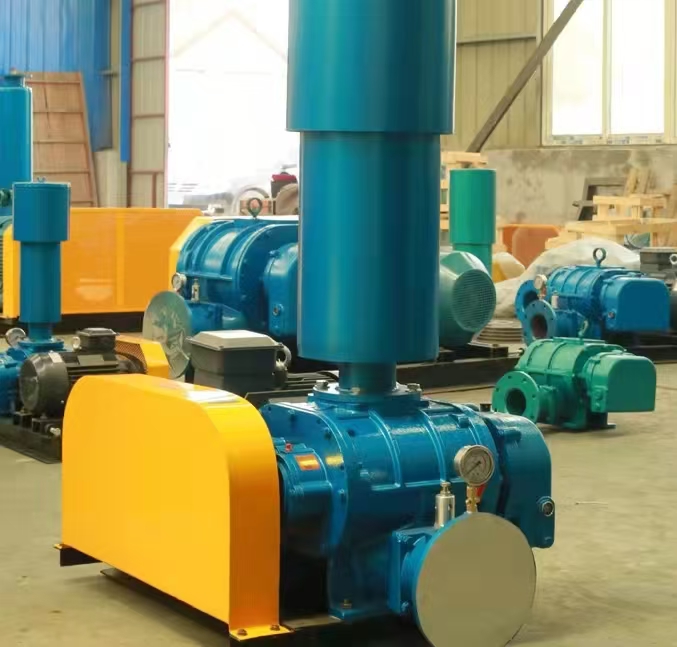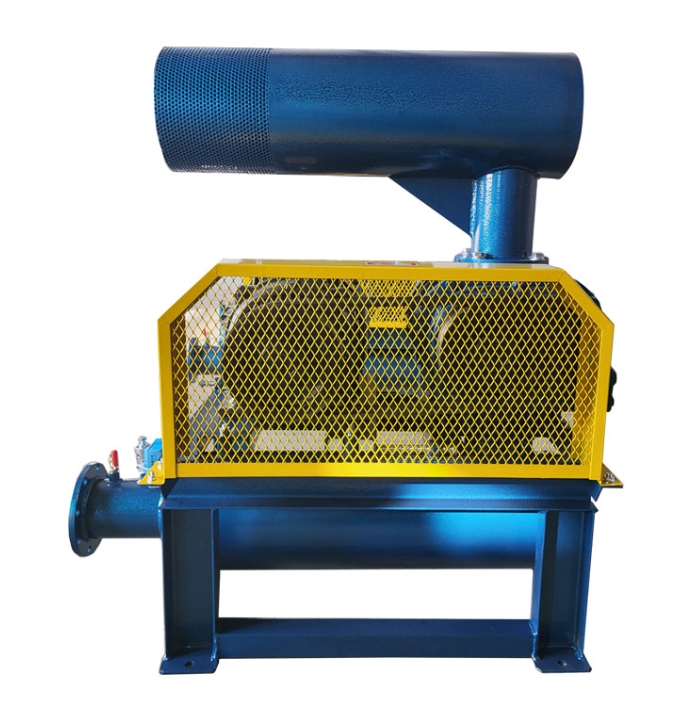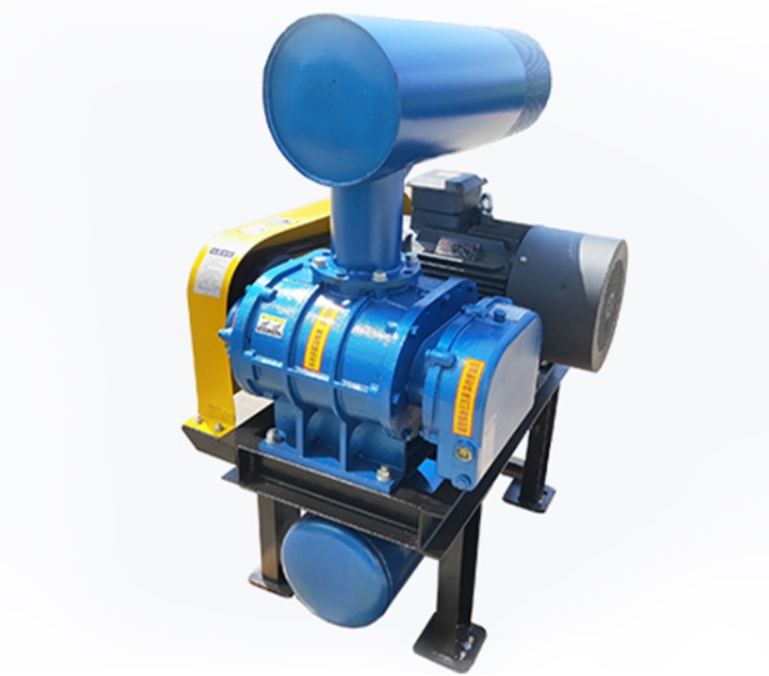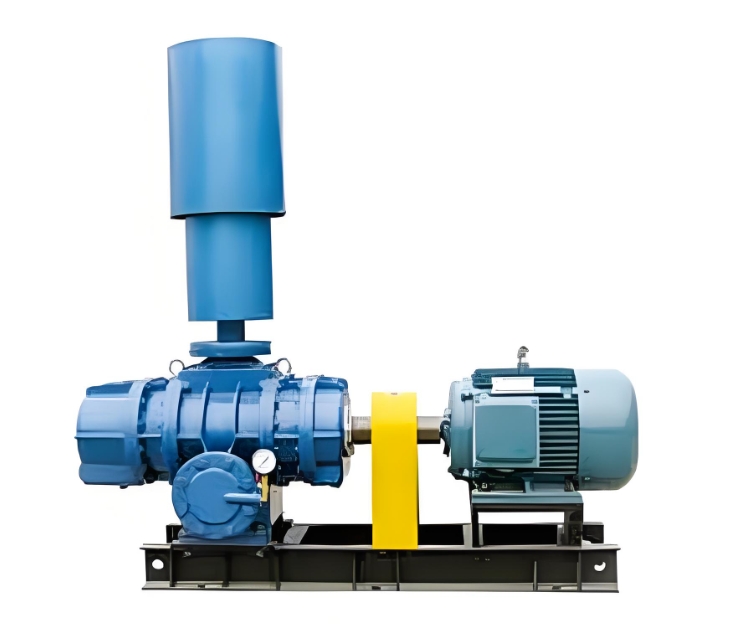**Roots blower is a type of positive displacement rotary fan that uses mechanical means to forcibly transport gas, characterized by stable flow rate and medium to low pressure. Here is its core analysis:
---

###1. Essence and Working Principle**
1. * * Core Structure**
-Double bladed wheel (two or three bladed): Two interlocked rotors rotate in opposite directions inside the casing.
-* * No internal compression * *: Gas is "trapped" from the inlet and pushed to the outlet, and the pressure is determined by the system resistance * * (the fan itself does not compress gas).
2. * * Working process**
```plaintext
Air intake → impeller rotation to seal gas → gas is forcibly pushed to the outlet → discharge
```
-Constant flow rate: When the speed remains constant, the air volume is basically not affected by pressure (which is fundamentally different from centrifugal fans).
---
###2. Core Features**
|* * Features * * | * * Description * *|
|----------------|-------------------------------------------------------------------------|
|* * Oil free design * * | Transporting pure gas without lubricating oil pollution (suitable for the food and pharmaceutical industries). |
|* * Stable flow rate * * | Even if the system pressure changes, the air volume fluctuation is minimal (suitable for scenarios that require precise air supply). |
|* * Medium low pressure range * * | Standard type pressure: 9.8~98 kPa (high-pressure type can reach 200kPa). |
|* * Simple structure * * | Low failure rate and easy maintenance (only requiring regular gear oil changes and clearance checks). |
---
###3. Differences from other fans**
|* * Comparison item * * | * Roots blower * * | * * Centrifugal fan * * | * * Screw fan * *|
|----------------|----------------------------|--------------------------|--------------------------|
|* * Working principle * * | Volumetric (mechanical extrusion) | Kinetic energy (centrifugal force) | Volumetric (screw rotation compression)|
|* * Pressure range * * | Medium low pressure (9.8~200kPa) | Low pressure (<15kPa) | Medium high pressure (up to 400kPa)|
|* * Flow regulation * * | Requires variable frequency speed regulation or bypass valve | Directly regulated through valve | High efficiency of variable frequency speed regulation|
|* * Typical uses * * | Sewage treatment, pneumatic conveying, ventilation, air conditioning, compressed air, process gas|
---
###4. Main application areas**
1. * * Sewage treatment * *: aeration and oxygenation (activated sludge process).
2. * * Pneumatic Conveying * *: Conveying particles such as cement, grain, and fly ash.
3. * * Aquaculture * *: Oxygenation at the bottom of fish ponds.
4. * * Chemical/Metallurgical * *: Gas circulation, blast furnace blowing.
5. * * Vacuum packaging * *: suction creates negative pressure (such as food packaging).
---
###5. Key Parameters for Selection**
1. * * Flow rate (m ³/min) * *: According to process requirements (such as aeration rate).
2. * * Pressure (kPa) * *: Pipeline resistance+liquid level height (such as sewage tank depth) needs to be calculated.
3. * * Power (kW) * *: determined by flow rate and pressure to avoid overload operation.
4. * * Medium * *: Clean air, corrosive gases (special materials required).
**Example * *:
-Sewage aeration: water depth of 4m → pressure ≈ 39.2kPa, choose a flow matching model (such as 30m ³/min).
---
###6. Advantages and disadvantages**
**Advantages * *:
-Simple structure and low maintenance cost.
-Stable flow rate, suitable for precise gas supply.
-No oil pollution, suitable for clean environments.
**Disadvantages * *:
-The noise is loud (requires the addition of a muffler).
-The efficiency is lower than that of screw fans under high pressure.
---
###7. One sentence summary**
Roots blower is a "gas transporter" that uses impeller engagement to forcibly transport gas. It is suitable for situations that require stable flow and medium to low pressure (such as aeration, conveying, and oxygenation), but it is recommended to choose a screw fan for high pressure requirements.





